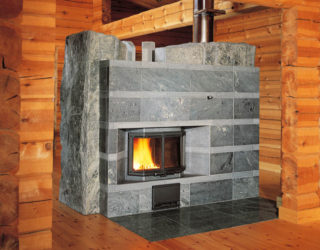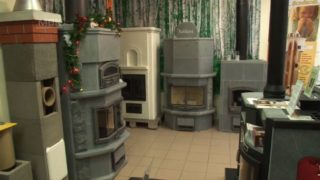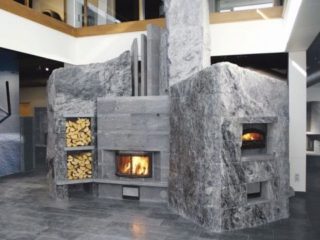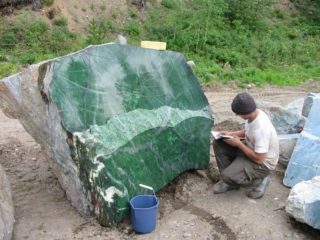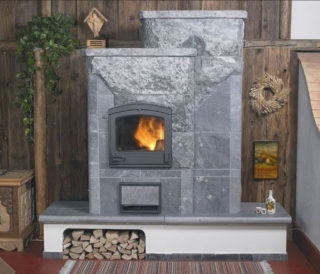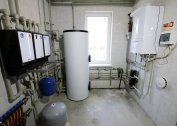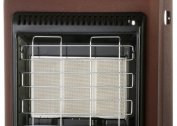Owners of private houses have long been attracted by cost-effective and efficient models of stove equipment from Finland. In this Scandinavian country with a harsh climate, the best examples of fireplaces in Europe are traditionally produced. This is confirmed by the Tulikivi furnaces, known for their efficiency and other attractive qualities.
The advantages of furnaces
The distinguishing features of Finnish Tulikivi fireplaces are their visual appeal and versatility, as well as their economy and ease of use. In addition, heating equipment from Finland allows you to accumulate heat and for a long time to warm the room with healthy radiant energy. The following important advantages of these products are added to all of the above:
- One bookmark of dry fuel (firewood) is usually enough to maintain a comfortable temperature in the house during the day.
- The device of the fireplace, made entirely of stone, guarantees unique indicators of heating efficiency with minimal fuel consumption.
- Thanks to a well-thought-out arrangement of furnace elements, heat leakage through the chimney is completely eliminated.
- The high performance of this class of stoves allows you to heat the entire country house or cottage.
A feature of Finnish heating devices is the ability to simultaneously preserve the freshness and aroma of wood while heating the room. The heating temperature of the furnace surfaces does not exceed 80 ° C, which eliminates accidental skin burns. The service life of fireplace structures is almost unlimited. The food prepared in them is not inferior to dishes from the “Russian” stove in terms of taste.
Types of Tulikivi furnaces
Finnish fireplaces are classified according to a number of signs:
- type of fuel used: gas, wood or electric;
- installation location: corner, wall, built-in, etc .;
- design: typical, exclusive, etc.
Ovens differ in the class of firebox used - open or closed type, as well as in functionality - the presence of an oven or stove-heater.
Fireplace designs also vary in style. The choice of the shape and color of the fireplace, as well as details of its design, depends on the design of the room. The most common is the classic version, which is characterized by:
- use of special facing materials: marble, granite or wood;
- the presence of U-shaped portals;
- open firebox and smoke eaves.
Such fireplaces are often decorated with columns, classical sculptures or bas-reliefs made using antique motifs. Such structures are painted with natural granites, marble or wood, as well as amber or coffee shades.
Modern stove designs are often finished with ceramic tiles or have a design that is distinguished by its decorative details. Loft style fireplaces are used to create original interiors. These structures are most often located in the corners of the premises or in the center.
English-style fireplaces with individual details resemble classic designs. They feature straight chimneys and the use of masonry as an exterior finish. This design style of stove and fireplace structures involves the use of only open fireboxes.
Specifications
Finnish Tulikivi stoves are well-deservedly popular among domestic consumers who prefer environmentally friendly and natural materials. When assembling them, talc magnesite (its other names are shale or steatite), which refers to natural minerals of volcanic origin, is used. The material has unique properties that allow it to accumulate heat. According to this indicator, slate is 2.5 times higher than energy-intensive brick.
The characteristics of the Tulikivi furnace include:
- advanced functionality, as well as a large selection of sizes and mounting options;
- the ability to complete with doors made of metal or special heat-resistant glass;
- permissibility of using various types of fuel;
- the presence of a built-in electronic control system that allows you to maintain optimal temperature in the house in automatic mode.
Different models of Finnish fireplace stoves, differing in size and configuration, have an equally high efficiency, reaching 87%. At the same time, the minimum amount of carbon monoxide “leaks” into the atmosphere.
Criterias of choice
When choosing the right model are guided by a number of points that would allow:
- to realize the conceived design decisions;
- effectively warm all rooms in the house;
- to achieve comfortable conditions due to the high quality of the air environment.
The design to be purchased must guarantee absolute fire safety.
User manual
The operating rules for Tulikivi fireplaces come down to the following recommendations:
- Before starting the kindling, the presence of traction is checked, for which it will be necessary to open all available valves.
- Finely trimmed chips are stacked and fired up in the combustion chamber in order to remove moist and cold air from it. After this, normal traction usually appears.
When igniting, do not use flammable or flammable liquids. It is advisable to abandon the use of paper and newspapers. The fireplace itself and its chimney must fully comply with fire safety requirements.
If well-defined cracks appear on the walls, the stove should be temporarily abandoned.
Popular models
Popular fireplace models from a Finnish manufacturer include:
- Tulikivi Harmaja / R products;
- Tulikivi Gemini Fireplace
- Designs Tulikivi Sarmi / C.
Among the Tulikivi fireplaces and stoves on the market, there are not only major structures, but also lightweight models that can be installed anywhere. Their typical representatives are samples under the names HETTA, TITANIA, ZEVIA.
